We thought those animals on the Frontier Airlines livery were just hanging around looking cute. Turns out they were biding their time, plotting. And now they’ve made their move.
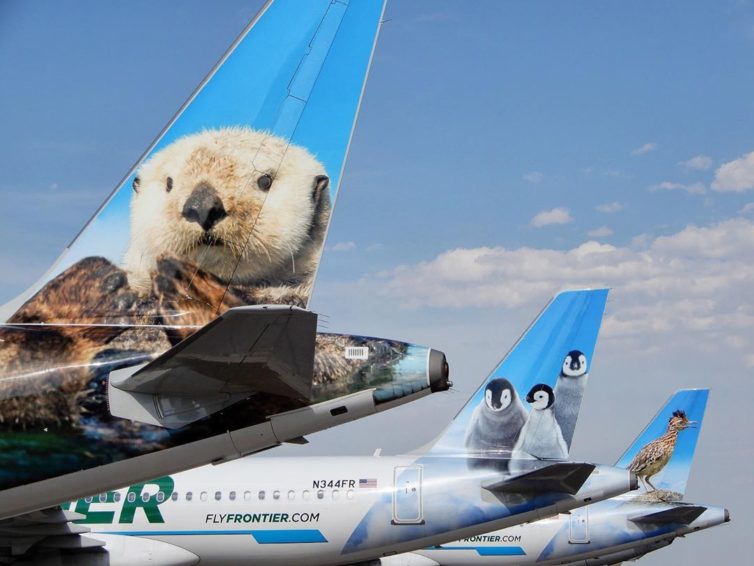
That otter definitely looks like the scheming type – Photo: Frontier Airlines
Frontier just announced its planned purchase of fellow ultra-low-cost-carrier Spirit Airlines. The result will be a low-cost juggernaut, ranking fifth in size among America’s airlines. One of our more prescient contributors, Steven Kimball, suggested this merger back in 2016. And from the airlines’ perspective the merger makes a lot of sense.
Obviously there’s the similarity in their approach to bare-fare pricing and bare-bones service. But also the all-Airbus narrowbody fleet, which will definitely contribute to a smoother merger and operational synergies. Both airlines operate the A320neo, and the new combined fleet will boast great fuel efficiency (cramming a ton of passengers into each plane also helps efficiency, I guess).
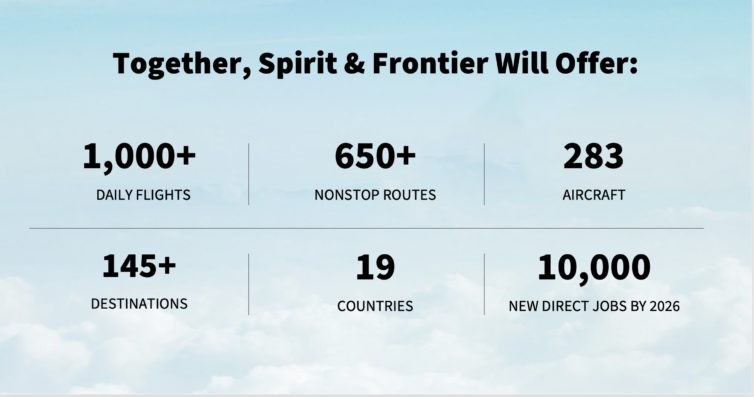
Image: Spirit Airlines
What’s the upshot for passengers? The airlines are trying to spin this as a positive, with Frontier loyalists getting better access to Spirit’s network in Central and South America, and Spirit-ers gaining more destinations in the western United States. The combined airline’s heft may help it better compete with the big four. At the same time, this means fewer individual airlines within the ULCC segment, which may drive up fares in that part of the market.
Also it’s no sure thing that the government will approve this plan. On one hand, the current administration has expressed a desire to keep inter-airline competition strong, and has been less friendly to mergers and partnerships. On the other hand, the administration is a little more embattled now and may not want to pick this fight. Or they may buy into the two airlines’ argument that a larger fifth player in the market is better for competition overall.
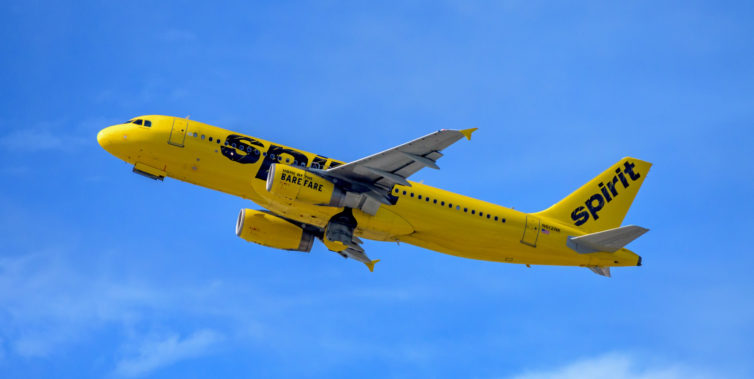
A Spirit A319 taking off from LAX – Photo: Thomas Hart | FlickrCC
Often, people try to avoid the ultra-low-cost carriers (ULCC), but I have been wanting to try Spirit Airlines for quite a few years now. During a recent trip from Seattle (SEA) to Los Angeles (LAX) with my girlfriend, I ended up having that chance… kind of.
There is quite a bit of competition between SEA and LAX. I hold most of my miles with Alaska Airlines and also have their credit card. That means I get extra miles when booking their tickets and I also get a free checked bag. When I compare prices, it is not just the sticker price, but also all the extras and the miles that factor into my decisions. Going down to LAX, Alaska was the obvious winner. But coming home, even with paying for a checked bag, two seat assignments, and loss of miles, Spirit was much cheaper (about $175 for both of us). To be honest, I was hoping that was the case, since I wanted to give them a shot (always been jealous of our JL doing the legit bare fare… for science).
I will say that getting to the final price on Spirit, to compare to other airlines, is not the easiest. There are so many different steps, a log-in, and up-sells before you finally get to the payment screen to see the total price. It was a pain. However, I cannot understand how someone could go through that entire process and not understand that they were being (or will be) charged more for the extras. Annoying, but also annoyingly clear.
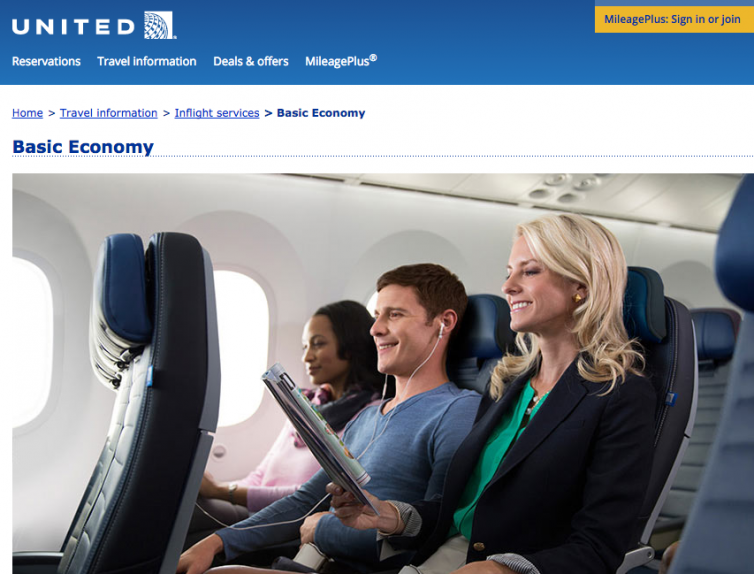
Will you be smiling that much when you fly Basic Economy? Photo: United Airlines
Even though the vast majority of my flying is in economy, it’s sometimes hard for me to know exactly what economy class is anymore. In the good old days, it reliably meant a seat with enough legroom, a drink, a snack, and my fair share of space in the cargo hold. But under pressure from ultra-low-cost carriers, U.S. legacy airlines have chipped away at what they offer travelers seated aft of the wing.
That trend took a major jump forward — or, depending on your perspective, backwards — with the introduction of new no-frills “Basic Economy’ fares that do the bare minimum to get you from Point A to Point B. Delta announced the rollout of its Basic Economy in select markets in late 2014, and has expanded it to other routes since then. United unveiled its own basic product late last year. Earlier this week, American shared that its own Basic Economy fares will be going on sale in February, starting with ten markets.
Is this new category of barebones fares good news for price-sensitive flyers? Or is it a new circle of hell in the sky? Read on for more on Basic Economy and what it means for you.
Who doesn’t like low prices? I know I do. But I also know with low prices, there is probably a “catch,” or I might not get the same experience as if I paid more elsewhere. This concept seems to be pretty simple to understand (the whole “you get what you paid for”), but many it all goes out the window when you start flying.
There are many passengers out there who are not fans of super cheap airlines (and ala cart) airlines, like Spirit and Allegiant. These are probably two of the most aggressive ultra low cost carriers and I think this post speaks to why these airlines can be so successful. These are the airlines who provide rock bottom prices and the ability to pay more for the services you want/need. A few years back (first published in April 2011), my creative side decided to make a little comic strip showing the five stages of flying an ultra low cost carrier. It has been of my all time favorite stories, because it rings true so often. I am guessing that these five stages might seem pretty familiar to many of you!
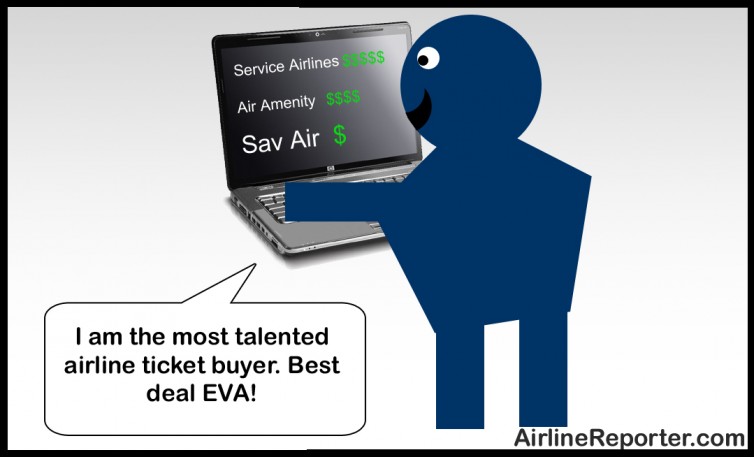
Stage One: The Search
There are many out there who could care less about what airline they fly on — all they care about is price. They remember flying from Los Angeles to Topeka in 1996 for $79.00 round trip and refuse to pay more than that ever again. They will check every airline site possible, spending hours, maybe even days trying to find the best deal possible. Then, amazingly they find one airline with prices way less than their competitors. Why is it so much cheaper? Who the heck cares… for that price, you are willing to fly in a cardboard box! After getting your ticket, you gloat to as many as you can on how much you saved. You title yourself the “Airline Fare Master.” Oh… just wait my friend.
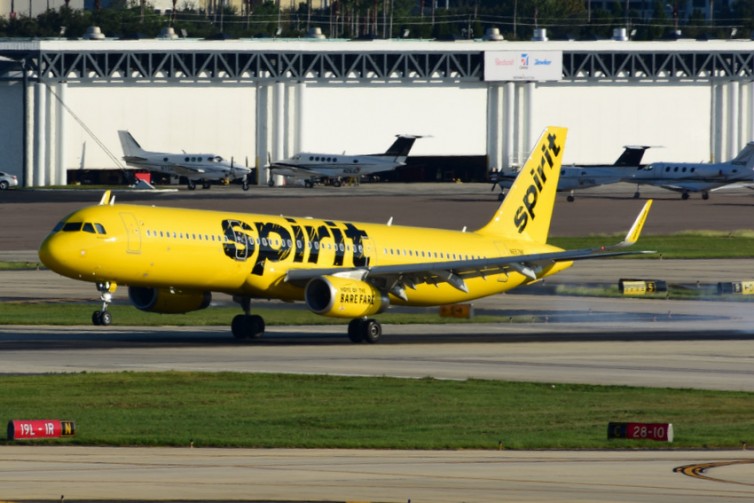
A Spirit Airlines Airbus A321 wearing the Bare Fare livery at TPA – Photo: JL Johnson | AirlineReporter
I paid a mere $16.11 for a one-way Spirit Airlines Bare Fare flight from Kansas City to Dallas. Crazy, right? It gets crazier $14.24 of that ticket went to the “Government’s Cut,” (Spirit’s words, not mine) that is, various government-imposed fees and taxes. Of the remainder, a single penny went towards the base fare, with the final $1.86 going to what Spirit refers to as “Unintended Consequences of DOT Regulations.” Depending on where you sit on the regulatory fence, the actual revenue from my Bare Fare was either a penny or $1.87.
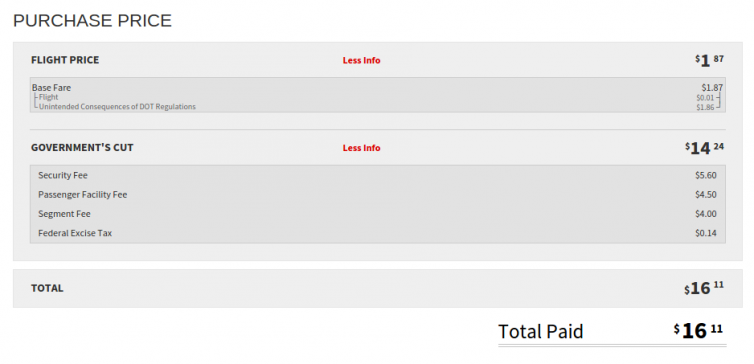
Spirit Airlines Bare Fare cost structure breakdown – Image: Spirit.com
Either way, the airline was bound to make money off of me from their various fees, right? After all, that’s what Spirit is known for: evil fees. But, what if I went totally bare and instead just paid only for “ass plus gas” (again, Spirit’s words, not mine). Do people actually do that? I did… for science.






